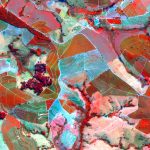Geographical Mapping of Coffee Crops
Although new advances in machine learning have revolutionized Computer Vision in recent years for many applications, existing solutions have several limitations when directly applied for agricultural mapping.
A first challenge is that automatic mapping using remote sensing images as a data source is generally modeled as a supervised classification problem in which the system needs to learn the patterns of interest provided by the user and assign a class to the rest of the pixels of the image corresponding to the area of study.
The representativeness of training set is essential in this process. However, in agriculture pattern recognition applications, it is often necessary to visit the studied place, which adds costs to the analysis. Thus, it is important to consider not only the quality but also the quantity of samples.
Finally, many challenges are associated with the nature of remote sensing images, among which we can highlight: (1) they are georeferenced images, that is, each pixel has a associated geographical coordinate; (2) they generally encode much more than information in the visible spectrum, which requires the development of specific algorithms to describe patterns; (3) the data may vary to spatial resolution by changing the level of detail of the patterns; (4) many applications tend to require spatio-temporal data analysis, with several images of the place of study over time, which is the case of some agricultural crops.
Therefore, new strategies for image processing and machine learning are required to manipulate these large sets of images and convert them into the aimed information, taking into account the challenges to obtain high-quality training data imposed by the application.
In this research project, we face the problems of agriculture mapping with focus on coffee crop. In this research project, we face the problems of agriculture mapping with focus on coffee crop. We count with the collaboration of researchers and agriculture specialists from University of Campinas and the Cooperative of Coffee Producers from Guaxupé (Cooxupé).


